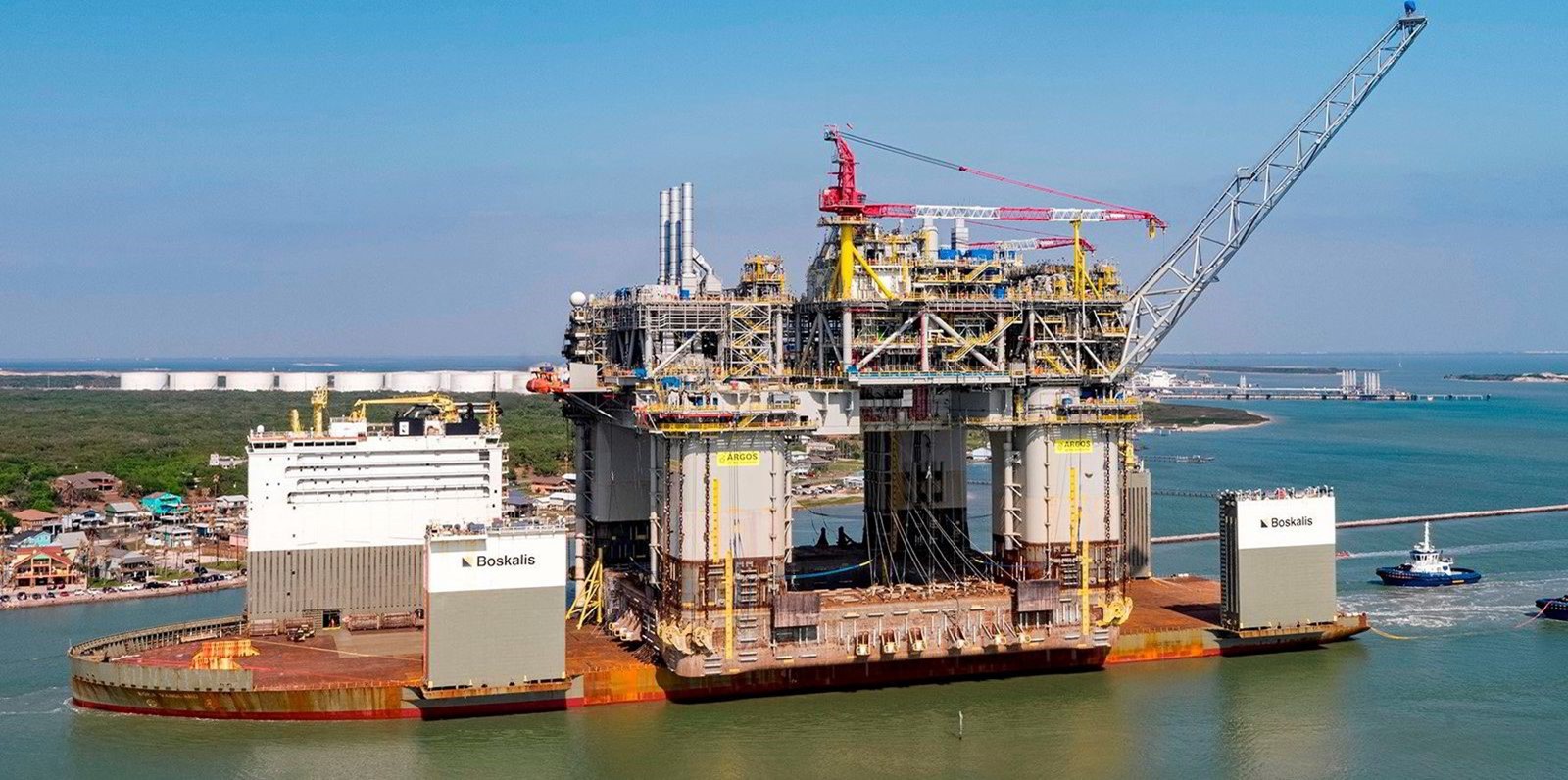April 2022, Vol. 249, No. 4
Features
BP’s Argos Platform Pushing Digital Boundaries in GOM
Special to P&GJ
When it arrived at its offshore home on the Mad Dog Field in Green Canyon Block 780 at the end of 2021, BP’s Argos floating production unit (FPU) became one of the most digitally advanced platforms in the U.S. Gulf of Mexico.
Its journey from drawing board to first oil has had its share of challenges. But Argos has also been an opportunity for BP to transform and modernize its offshore operations.
The field, discovered in 1998, has been in production since 2005 through the Mad Dog production spar. Continued appraisal drilling in 2009 and 2011 doubled the resource estimate of the Mad Dog Field to more than 5 billion barrels of oil equivalent, creating the need for a second platform.
Delivering that platform proved to be more challenging than first expected, when in 2013 the UK supermajor and its project partners, Chevron and BHP Billiton, decided to reevaluate the Mad Dog Phase 2 project after its initial design proved to be too complex and, with a $20 billion price tag, too costly.
“The team clearly heard the call to do things differently, so back to the drawing board we went,” Ken Nguyen, BP’s principal portfolio manager for Mad Dog Phase 2, said. “We had to deliver something that made sense for the company.”
Three years spent simplifying and standardizing all aspects of the Mad Dog Phase 2 project ultimately led to BP’s greenlighting it at $9 billion, with a semi-submersible platform similar in design to its Atlantis platform selected as the FPU.
Final work on the Argos FPU is underway at Kiewit Offshore Services fabrication yard in Ingleside, Texas, where the 60,000-ton unit arrived in April after a 16,000-mile (25,750-kilometer) journey from South Korea. The platform arrived at its offshore home on the Mad Dog Field in Green Canyon Block 780 and completed mooring at the end of last year.
Standing 27 stories high, the Argos FPU, at its peak, will produce up to 140,000 boe/d from the Mad Dog Field through a subsea production system comprising 22 subsea wells across four drill centers.
Digital Double
Digital twins – visual representations of structures and systems kept updated with real-time data – have been around for several years. BP’s dynamic digital twin, which Nguyen helped invent for the Argos facility and production system, takes a different approach.
“We weren’t trying to patent the technology itself, but rather the system to contextualize the data. The system takes all this complex and disparate data and transforms it in a lifelike way,” he said.
There is a complete dynamic digital twin that shows everything from the oil-water contact line in the reservoir, the well path to the top-hole location, subsea trees, and flowlines up to the Argos’ topsides, using real-time data to create that visualization.
“We don’t attempt to solve this big-data problem. We leave this data in place in the system record, pulling and aggregating them in real time to present, in a meaningful way, at that moment in time,” he said.






Comments